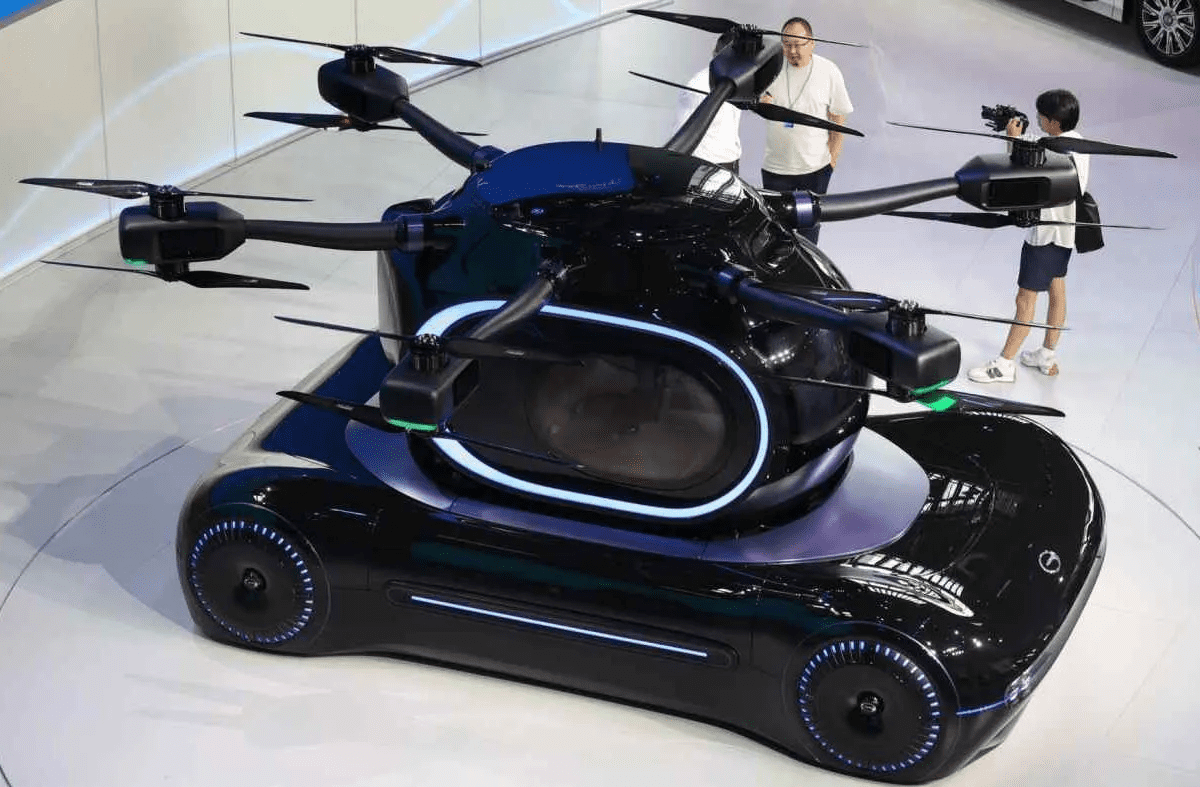GAC Group, a renowned Chinese automaker active in the Electric Vehicle (EV) market, has ventured into designing electric vertical take-off and landing (eVTOL) vehicles. Gove, their innovative eVTOL vehicle, has a unique design that allows it to split into two for efficient mobility. This fully integrated transportation system houses a single passenger flying pod that can autonomously return to its dock station.
Reminiscent of a conventional car with a large drone on its roof, Gove’s flight system operates via a right-hand lever controlling forwards and backwards movement, as well as turns, hover, and elevation. It has a maximum payload of 450 kilograms, a cruising speed of 260 kilometers per hour, and a maximum distance per charge of 200 km, varying with the model’s battery capacity.

Gove has demonstrated its flight safety in tests, even halting one or more rotors mid-flight to investigate potential motor failure scenarios. Despite the progress, the vehicle’s development is in its early stages and faces regulatory hurdles before it can be rolled out widely.
The eVTOL market is seeing a surge of interest despite the inherent challenges of design, manufacture, and certification. Gove’s unique approach involves a detachable EV that autonomously returns to base, combining the best features of an eVTOL and a flying car.
The flying pod is equipped with a dual-backup multi-rotor flight system. Meanwhile, the lower driving portion utilizes GAC’s autonomous ADIGO-Pilot technology. This design allows for takeoffs from high-rise buildings, parking garages, or helipads in crowded cities. Unlike conventional aircraft, eVTOLs like Gove are powered by batteries, making them a greener choice.

While Gove aims to remodel cars as appliances with less driver involvement, it faces the challenge of public acceptance. Despite this, advancements by companies such as Xpeng, Alef, and GAC Group have brought the age-old dream of flying cars closer to reality.
Gove’s design incorporates GAC’s autonomous ADIGO-Pilot system and a twin backup multi-rotor flight system, indicating that vertical take-offs from roads could become feasible in the future. Despite the high costs traditionally associated with helicopters, GAC Group promises an affordable price point of no more than 7 million yuan per unit, a fraction of the conventional helicopter cost.
Gove presents a glimpse into the potential future of all-electric mobility, although the infrastructure to support it is still a work in progress. The emergence of eVTOLs like Gove reflects an overarching transportation strategy prioritizing efficiency and convenience. However, significant technical, societal, and legal hurdles need to be overcome to make flying cars a practical reality.
Similar Post
China’s progress in the EV industry has spurred eVTOL development, according to Zhou Hai, the company’s marketing manager. However, the integration of these vehicles into the current transportation systems requires comprehensive airspace management, stringent safety regulations, and public trust.
Last October, the Shanghai municipal government announced an action plan to pursue technological breakthroughs in manned eVTOL aircraft. While this marks a significant stride towards emerging technology, public acceptance of autonomous, high-speed transportation remains a critical factor.

Despite the potential benefits of flying cars, such as reduced traffic congestion and faster travel times, concerns about noise pollution, infrastructure needs, and airspace management must be addressed. As the potential for flying cars becomes increasingly apparent, balancing innovation with security measures and regulations will be key to their success.

















![This image taken from video animation at Beijing Aerospace Control Center (BACC) on June 2, 2024 shows the lander-ascender combination of Chang'e-6 probe landing on the far side of the moon. [Photo/Xinhua]](https://www.karmactive.com/wp-content/uploads/2024/06/spp.jpeg)
